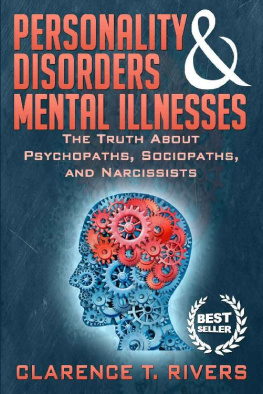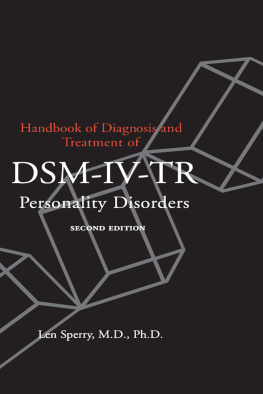Contents

Copyright 2000, 2004 by John Wiley & Sons, Inc. All rights reserved.
Published by John Wiley & Sons, Inc., Hoboken, New Jersey.
Published simultaneously in Canada.
No part of this publication may be reproduced, stored in a retrieval system, or transmitted in any form or by any means, electronic, mechanical, photocopying, recording, scanning, or otherwise, except as permitted under Section 107 or 108 of the 1976 United States Copyright Act, without either the prior written permission of the Publisher, or authorization through payment of the appropriate per-copy fee to the Copyright Clearance Center, Inc., 222 Rosewood Drive, Danvers, MA 01923, (978) 750-8400, fax (978) 646-8600, or on the web at www.copyright.com . Requests to the Publisher for permission should be addressed to the Permissions Department, John Wiley & Sons, Inc., 111 River Street, Hoboken, NJ 07030, (201) 748-6011, fax (201) 748-6008.
Limit of Liability/Disclaimer of Warranty: While the publisher and author have used their best efforts in preparing this book, they make no representations or warranties with respect to the accuracy or completeness of the contents of this book and specifically disclaim any implied warranties of merchantability or fitness for a particular purpose. No warranty may be created or extended by sales representatives or written sales materials. The advice and strategies contained herein may not be suitable for your situation. You should consult with a professional where appropriate. Neither the publisher nor author shall be liable for any loss of profit or any other commercial damages, including but not limited to special, incidental, consequential, or other damages.
This publication is designed to provide accurate and authoritative information in regard to the subject matter covered. It is sold with the understanding that the publisher is not engaged in rendering professional services. If legal, accounting, medical, psychological or any other expert assistance is required, the services of a competent professional person should be sought.
Designations used by companies to distinguish their products are often claimed as trademarks. In all instances where John Wiley & Sons, Inc. is aware of a claim, the product names appear in initial capital or all capital letters. Readers, however, should contact the appropriate companies for more complete information regarding trademarks and registration.
For general information on our other products and services please contact our Customer Care Department within the United States at (800) 762-2974, outside the United States at (317) 572-3993 or fax (317) 572-4002.
Wiley also publishes its books in a variety of electronic formats. Some content that appears in print may not be available in electronic books. For more information about Wiley products, visit our web site at www.wiley.com .
Library of Congress Cataloging-in-Publication Data:
Personality disorders in modern life.2nd ed. / Theodore Millon... [et al.].
p. cm.
Rev. ed. of: Personality disorders in modern life / Theodore Millon and Roger D. Davis. c2000.
Includes bibliographical references (p. ).
ISBN 0-471-23734-5
1. Personality disorders. I. Millon, Theodore. II. Millon, Theodore. Personality disorders in modern life.
RC554.M537 2004
616.8581dc22
2004043374
Foreword
It is a pleasure to introduce the reader to the second edition of this highly acclaimed volume, Personality Disorders in Modern Life. The first edition, which I had the honor to review for Contemporary Psychology: APA Review of Books, was excellent, and the second edition by Theodore Millon and his team of coauthorsSeth Grossman, Carrie Millon, Sarah Meagher, and Rowena Ramnathexpands and updates the first. The senior author of this volume has reached the status of icon in the psychological sciences and has inspired a generation of workers in the field of personality theory, assessment, psychotherapy, and nosology. He is almost single-handedly responsible for the resurgence of a nearly moribund area in psychologypersonology, the study of the human personality system, of interest to humankind since the dawn of consciousnessand the concomitant development of language, cognition, and cultureonly a recent development. Personality theory nearly became extinct during the latter half of the past century, dismissed as a useless artifact of prescientific psychology. However, the advances of clinical sciences, such as diagnosis, classification, and psychotherapy, spear-headed by Millon, beckoned leaders in the field to prevent this clinically and socially useful area of discourse and science from going the way of other prescientific precursors of our field, such as phrenologythe study of the contours of the head and their relationships to various neuropsychological functions.
As I described in my review of the original edition, published at the turn of the century, this volume represented significant advances over the first 100 years of modern psychology. Advances in the fields of psychotherapy, psychopathology, and personality theory have been substantial. Over a century ago, William James (1890) published his two-volume work, Principles of Psychology, which many consider a landmark in psychology and which ushered in the birth of modern psychology. Certainly, there were other groundbreaking works that had similar impact on the clinical sciences, such as Freuds (1900) Interpretation of Dreams, which during the same time span, gave birth to psychoanalysis and what many consider to be the beginning of modern psychotherapy. Over the course of the first century of modern psychology, many have attempted to elaborate the realm of the personality system; but few have been as comprehensive in this endeavor as Millon. This volume represents the accumulated wisdom and theoretical, clinical, and empirical findings over the past century. It affords us the opportunity to be introduced or reawakened by one of the most interesting subjects of our time: personality and its disorders. The insight offered in this volume allows all of us to understand the complexities of the plethora of converging forces that leads to alterations in personality and how they are represented, conceptualized, and treated.
The audience for this text is advanced undergraduate and graduate students, but it will serve as an introduction to all interested readers and excite even the most hesitant reader. Its broad coverage introduces undergraduate students to the fascinating world of clinical sciences with easy-to-follow case illustrations through the eyes of a student struggling to understand how these constructs and theories apply to clinical reality. For advanced students, this text serves as a consolidation of Millons other works and introduces his conceptual system, which, for many, will lead to the reading of his other groundbreaking volumes on the topic. As a practicing clinician and personality theorist, I share Millons view that personality is the main organizing system of humankind, and any understanding or attempt at altering the suffering encountered in clinical practice requires a deep appreciation of the domains of human personality.
For those pursuing careers in the social or clinical sciences, this volume is one for your library of reference books. I guarantee that you will refer to it often. The systematic theoretical modeling and self-other awareness that this volume engenders will enrich those students who are attracted to other disciplines. All of us at one time will encounter individuals similar to those described in this volume. It is important that we not use personality labels pejoratively or stigmatize those who suffer from personality dysfunction but, rather, that we develop a deeper appreciation for the variety of personality types profiled in this volume. This appreciation will enable those in various careers to be more effective when assigned a narcissistic boss or when reading about a psychopathic individual who preys on society, such as some of the infamous figures presented in this text. Those in the medical professions will gain a keener appreciation for their patients and for how their psychological immune system, as Millon has termed it, functions and dysfunctions under stressful conditions.













